In order to describe Xavi Mañosa, one could start pointing out the small cabinet on wheels placed in his living room. At first glance, it is a quaint vintage object with a distinct Japanese aesthetic, but once the door is pushed open, the inside reveals to be a mirrored minibar. One could also mention the plastic pieces hanging on the wall next to his balcony door, in appearance modern decorative objects, which turn out to be parts of a fully dismountable minigolf. Or the simple white cotton shirt he is wearing, which as Xavi points out is a design of Berlin-based Studio Mashalla, made out of a single piece of fabric and based on a unique digital pattern. In all cases, his tendency towards objects that don’t immediately reveal their meaning becomes apparent, a feature recurrent in the ceramic pieces he produces under the alias of Apparatu.
Sitting in the cooling shade of the bar located in front of the studio run by the Mañosa family (a highly appropiate name for artisans, since the spanish word mañosa describes a handy, skilled person), surrounded by colorful antiques stalls and piles of old furniture, Xavi tells us the ins and outs of his career as a ceramist, including commissions from the likes of Nike, Alessi, Vitra or Camper, exhibits in new York, Tokio, London or Milan and workshops taught in museums and universities all around the world.
The pieces that come out of the family workshop in Barcelona’s outskirts go far beyond being visually stimulating, forming a reflection on the profession itself and the ceramic tradition Xavi inherited from his father. However, his desire to constantly question and reinvent his own work comes with a large dose of lighntess. Confronted with a conceptual analysis of his work, Xavi merely shakes his head and assures his projects develop naturally, without any previous concept, guided only by his intuition. By transforming and elevating the old art of ceramics into a new sphere, Xavi points out the imperfections of life, while making them look good in the process.
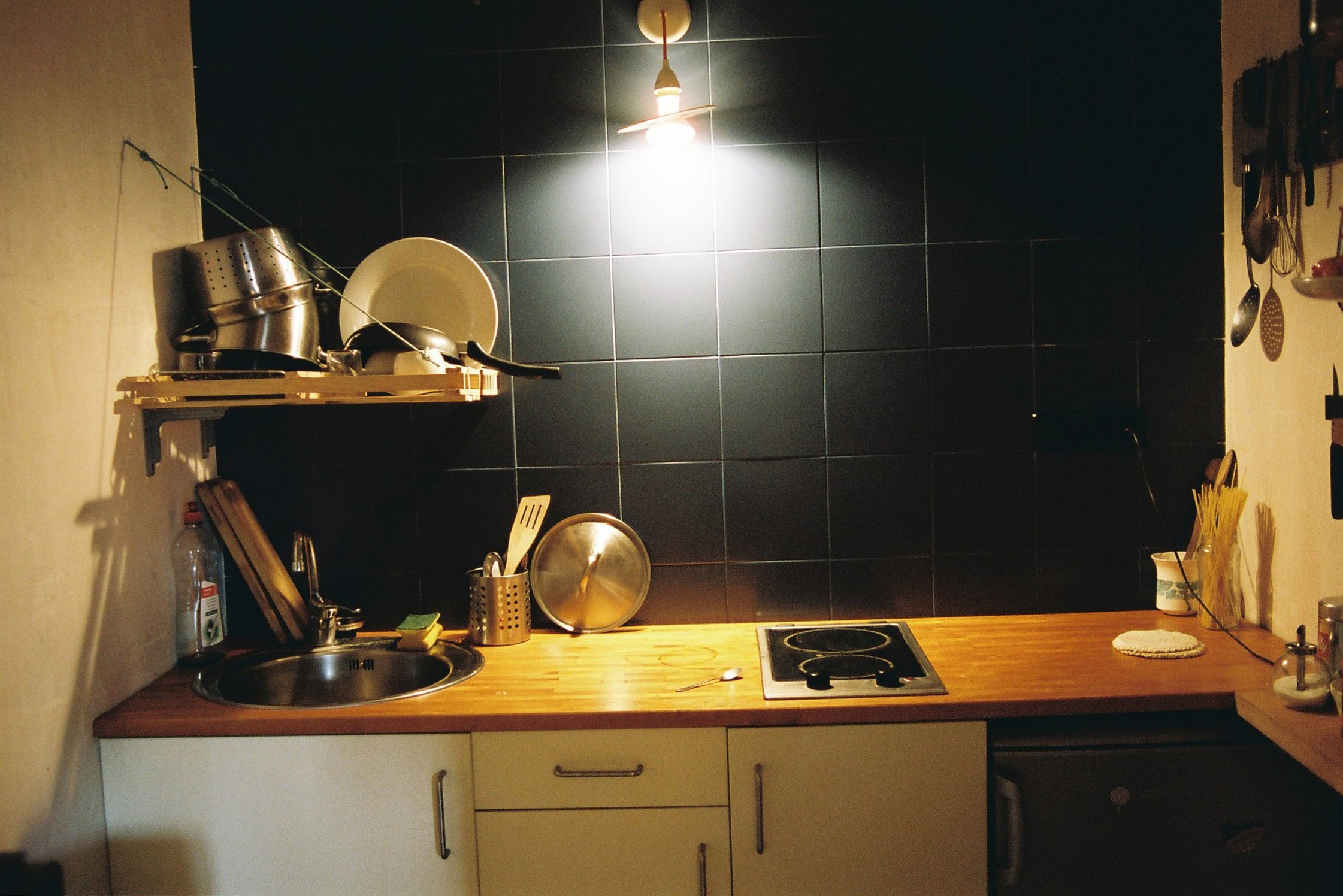








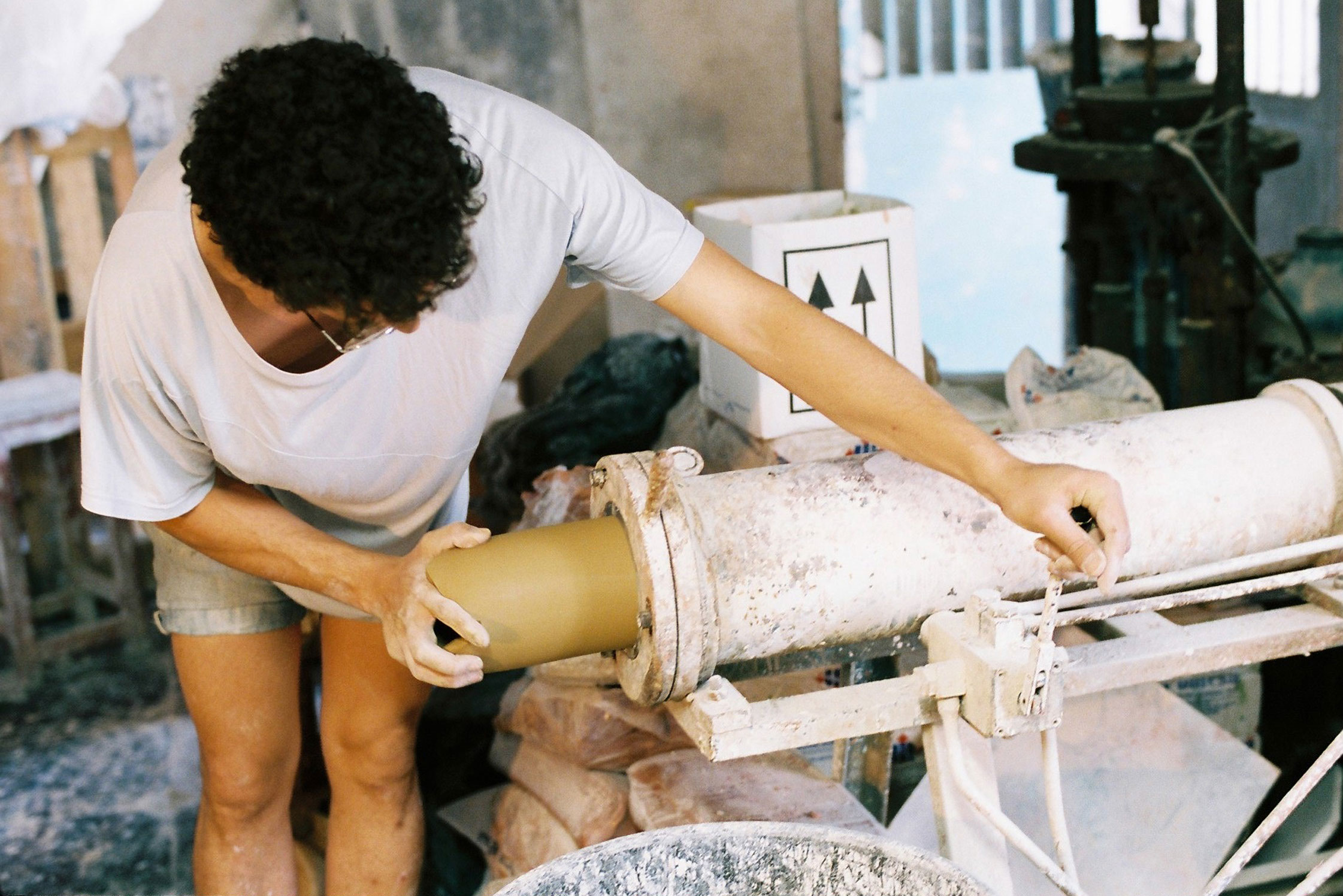
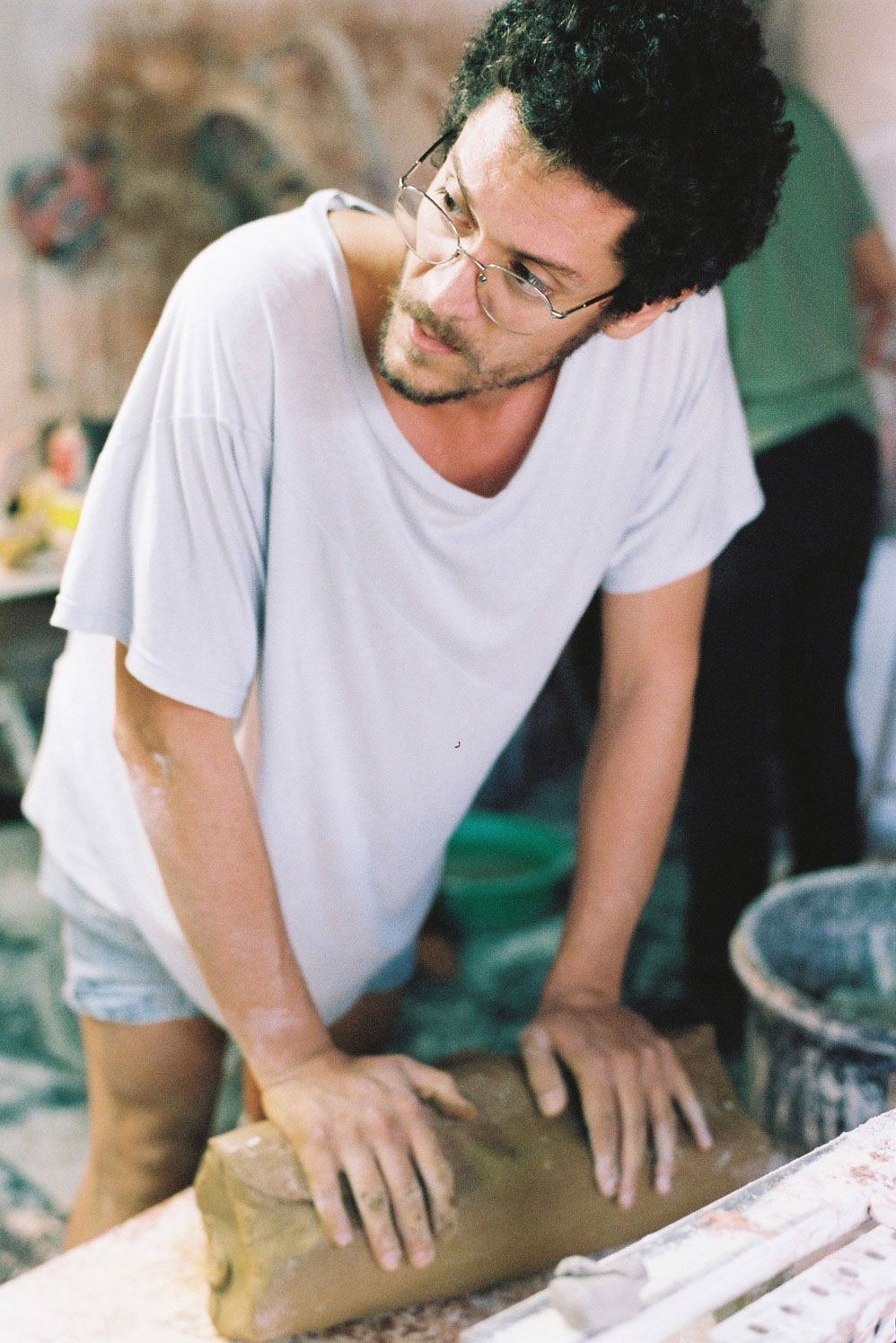





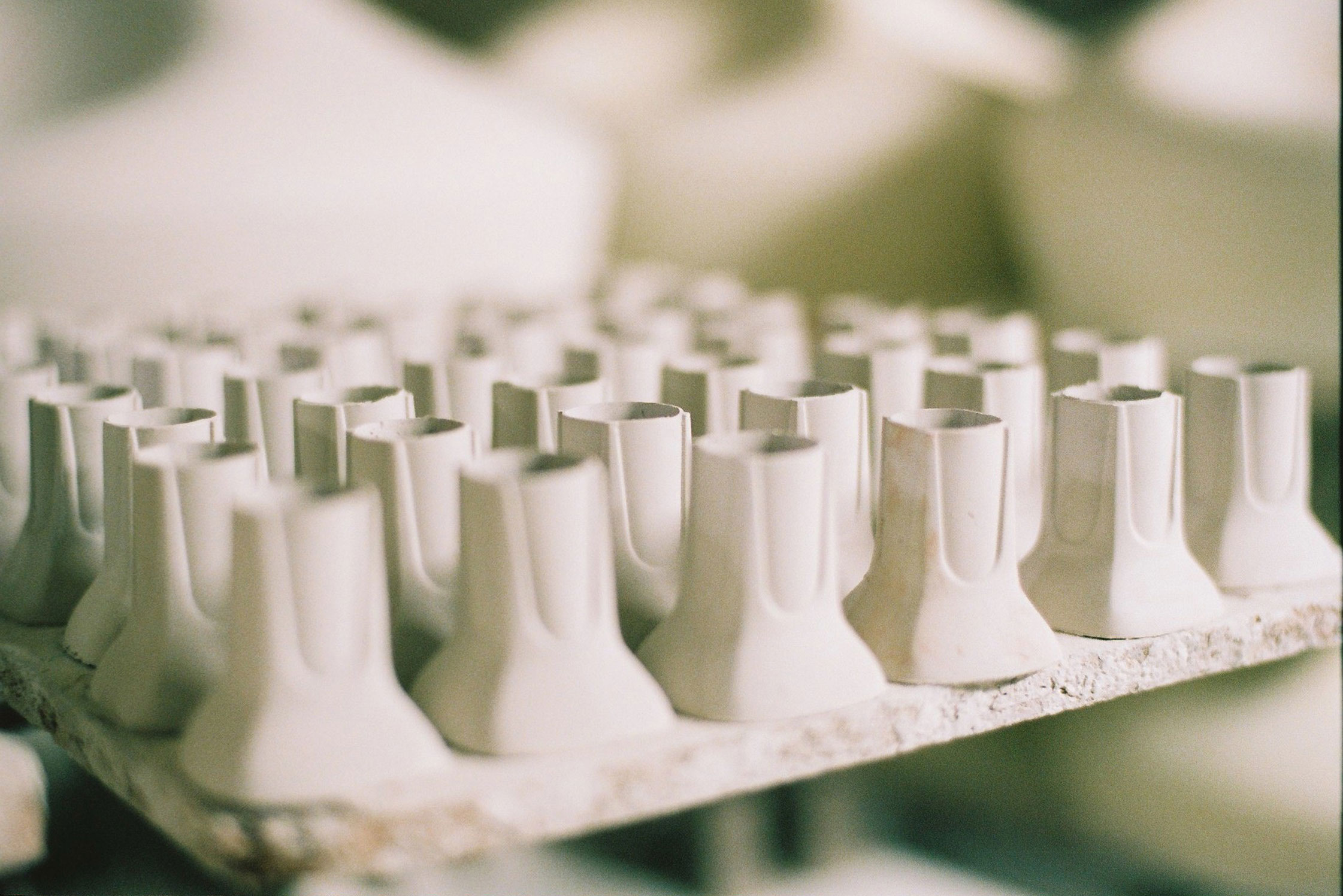


























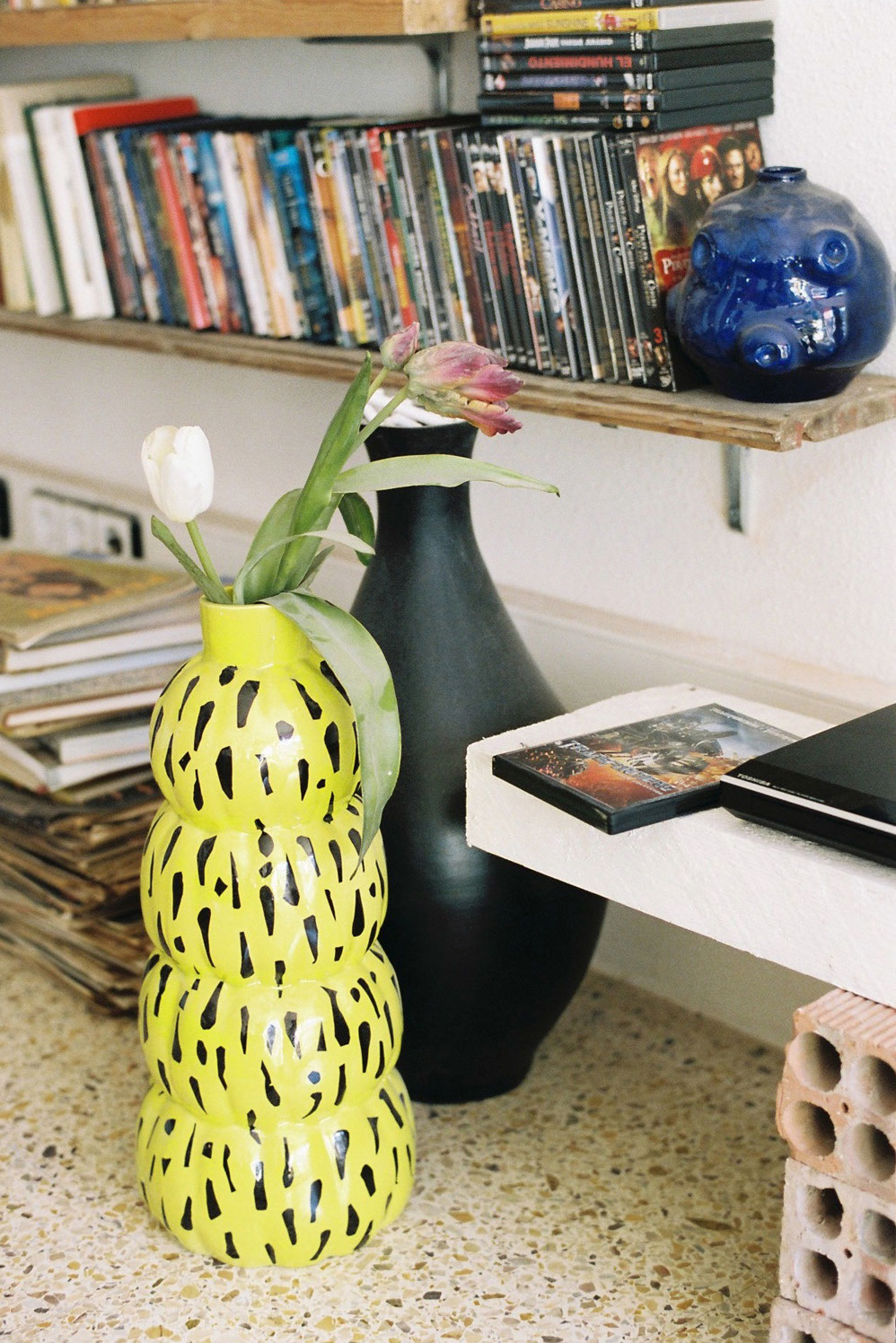








Coming from a family of ceramists, what was your relationship with ceramics during your childhood?
Every day after shool I had to come to the workshop because my parents didn’t trust me to be left home alone. The weekends, Christmas, the summer, they were all spent in the workshop. I basically hated ceramics. I didn’t feel like it was anything special.
What’s the story behind the family business?
My father was the one who started with ceramics. At 17, he met a Portuguese ceramist, Mr. Boni. I remember him because he used to come to the studio, always wearing a tilted hat. Even after sixty years in Spain, Mr. Boni spoke only Portuguese, so my father learned to make ceramics like that, without words. My uncle was a sculptor and he was considered the artistic soul of the family, but my father was more spartan, he just started making things because he liked ceramics, without thinking too much. When he met my mother, the three of them decided to set up a business and began making all sorts of pieces, from vases to figurines. When my uncle decided to leave the business, my parents moved the workshop from Cerdanyola to Sant Cugat, and that’s where I was born.
How did your career unfold up until the point where you are now?
After finishing highschool I started studying Industrial Design at the Llotja School in Barcelona. Although during that time I was already helping my parents out in the studio, I still didn’t care much about ceramics. Upon graduating I moved to Berlin with my girlfriend at the time, and when she left me for a German composer six months later, I decided to stay on my own. I lived in a Hausprojekt in Kreuzberg, where I set up a small pottery studio to make some money. I produced small pieces and sold them at the Boxhagener Platz fleamarket, while I kept searching for a job. I found it in a small store that sold spiritual items, incense, hammocks, buddhas etc. One day, a client took out a pendulum and started walking around the store. The pendulum started swinging in front of a giant Buddha statue, so the woman bought it and had it delivered to her home. What left me quite perplex was the fact that the pendulum reacted to that piece of cement, taken out of a mold and made without any kind of love.
So that was the moment when you decided to specialize in making artisan ceramics?
Exactly (laughs). No, what happened was that my parents asked me to create a couple of pieces for a fair, so I travelled to Barcelona to make them, since the studio I had in Berlin was very primitive. Something happened there, and when I returned I decided to keep on making pottery. Once I had six, seven pieces, a friend told me about an exhibition that was going to take place in London. I sent them some photographs and got accepted. Among the pieces were a ceramic cone, a three dimensional vase-blackboard, a water balloon… They were experiments, ready-made objects, little jokes.
When did you decide to create your own brand, Apparatu? What ́s the story behind the name?
On the ocasion of the exhibit in London, I decided to set up a website. Since I didn’t want to use my own name, I chose Apparatu, from the German word “Apparat” and the Catalan “aparatu”. The name is a symbiosis between poorly written Catalan and poorly spoken German. That’s how Apparatu was born, out of the need to organize my projects and set up a website, to create a permanent space for my objects. At the same time the desire to make things and to make them with ceramics kept growing, so I started travellig to Barcelona regularly to use the workshop. There came a point when I was spending more time there than in Berlin, so I decided to go back permanently. When I made that decision, I realized I had become a true ceramist. I was going to the studio daily, and rather than as an obligation, it was because I liked it.
How did your parents react to your decision to dedicate yourself to the family business?
I think everybody knew I was going to end up working with ceramics but me. That option was always there. I can hardly believe it when I meet people who decide to make ceramics without having the references I have, without having the family behind. I think: you really must like doing this. There will always be doubt as to whether you’re doing it because it’s convenient. You start getting closer and all of a sudden one day you find yourself there.
Is there any ceramist who has influenced you in a special way?
I think the fact that I dedicated myself to ceramics I owe in part to Hella Jongerius. When I arrived in Berlin I discovered her, I stumbled upon her website and I realized that making pottery could be something interesting, I saw her in the studio with her team and she seemed to be having fun. I saw something there that really touched me. She inspired me immensely.
Conceptually, many of your first pieces relate to contemporary culture phenomena – such as the Nike Hoodie Totem o the Skate Fails and Manga projects, which resulted from collaborating with the designer and illustrator Alex Truchut. How do you come up with these topics?
I come upon these subjects in my daily life, they result from observing ordinary things. My first pieces, including the ready-made objects, had a naive element in them. I simply felt like making them, without putting much thought behind. One of my first collaborations with Alex Truchut was Manga – a tribute to the world’s ugliest jacket. The idea came to me one day while I was riding the subway. In front of me sat a man wearing one of those poofy jackets and I thought to myself “my god, how ugly”. But since the whole wagon was wearing them, I decided they deserved a tribute. The Skate Fails is a project we made for the San Francisco based company FTC. The idea comes from the attempt to translate the skateboard to Dali’s liquid clocks. Alex and I started experimenting with different kinds of liquids, like honey or acrylic paint, observing how it dripped and flowed. We applied these exercises to the ceramic skateboard, melting it and seeing how it burned and wrinkled. The outcome was the collection of melted boards.
It strikes me that your collaborations with Truchut are very eye-catching aesthetically, they seem to stick to his motto “more is more”, while the pieces you have been developing on your own are more subtle, more theoretical. What’s behind this change of direction?
I think there came a point where I realized that the pieces I was producing, such as Puffy Jacket and some others, belonged more to the world of porcelain, but were made with faenza, a type of clay that does not have the qualities of porcelain. The current projects stem from trying to understand the reality of our workshop, which is a Mediterranean workshop, influenced by the craftmanship and ceramic culture of southern Europe, where working with low-temperature ceramics is usual. I came to realize that I was forcing the workshop to do things that were inadequate. I made an effort to understand the process and the materials we were using, and especially to understand and respect my father as the studio’s main tool, as an artisan and the person with the most knowledge about ceramics. I had been forcing him to work with molds that were perhaps too filigree for the things we could actually make. We tried hard to make them, we struggled, but we missed a lot of steps in the process. Now I know that we first need to understand what we are capable of doing here, and then exploit it and do it well, but in a natural way.
Are projects like 30 – a series of ceramic vases with purposely added mistakes – or LESSON – 36 vessels created during a turning wheel lesson where you try to replicate an original made by your father- linked to this aim of analyzing and unraveling the process of manufacturing ceramics?
Yes, in fact the first project of this type was MOLD. I came up with the idea of questioning the fact that molds still have such a bad reputation among the artisan world. Why is a vase considered more valuable when it wheel-thrown while becoming worthless when made with a mold? There’s a consistent and logical part to it, but at the same time, a mold can be as valid as a hand-made vase. At the end of the day, the wheel is also an industrial process, since it is used to accelerate the creation of a piece.
Normally, a mold has a life expectancy of 70 to 80 uses. On this basis I decided to make a mold and use it as long as it lasted. Between the first and the last copy changes occur, the mold gets worn out, so the piece grows larger. Parts of the mold stop absorbing water, so the final piece can have missing parts. We don’t intervene in the process, we simply fill the mold, remove it and number each vase. It’s about emphasizing that each piece is unique, that is our main job.
What inspires you to create new pieces?
I draw inspiration from the workshop, from understanding what it means to produce artisanly, to make vases, to number and limit a product. What does numbering mean? I always thought that making limited editions was a bit absurd, that it was like saying “I make 50 but I could make 5000”. But then I realized that to be making a vase and knowing I would keep on producing it forever was a bit of a strange idea. On an craftmanship level, I find the sense of limiting the production in the fact that making something indefinitely gives me a feeling of vertigo. When a project is done, there comes a point when you ́re not that interested in it anymore. And when you lose affection for a piece, things start to happen at the crafting level.
Tell us about the significance of color in your work. How do you face this subject?
I’m colorblind. Not completely, but I can’t see blues and greens well, I get lost in the tones. I don ́t have a proper foundation in color theory. Right now I make everything in the natural color of the material. If the clay is red, the piece is red, if the clay is white, it will be white. I tend to use transparent glazes. What is happening is that I’m going to the basis of everything, I’m going backwards. Everything is more primal, more basic. I want to start from the bottom in order to move forward, to grow.
The grey of the Pleat Box lamp is the only glaze that I developed. In the world of ceramics, every potter has his own colors, his blue, his white. I have my dirty grey, a glaze that came out of an attack of sensibility for the environment. Glazes are highly polluting heavy metals, so a while ago I decided to develop a water filtering system consisting of some barrels coming out of the drain. On day I noticed those buckets full of glaze remains and I came up with the idea of reusing them to create a new glaze. The outcome was a grey color that looked like cement. That new grey or “dirty grey” as I called it was made of leftover glazes from the workshop. What we did was go to the deposit and glaze with this new color. Depending on what we had been working with in the last month, the end result varied, the grey could be greenish or blueish. I really liked that random element. These kinds of details would be a mistake on an industrial level, but on an artisan level they make a piece truly unique, unlike any other. It’s like a freckle.
I imagine a ceramist’s home must be full of vases, bowls, plates and handmade objects. Do you like to live with your pieces?
I have a tableware made by my father and a couple of lamps, although I generally don ́t like to surround myself with my things. But when I moved in with my current roommate, I met again with all the pieces I had given him. So now my house is full of my stuff!
Since your studio is surrounded by antique dealers and you come across piles and piles of old and antique things every day, does it impact you in any way?
What strikes me most is leaving the workshop and bumping into someone’s life dropped there. All of a sudden I see something bizarre, a lot of antique ceramics too. Once I even found a piece that my own parent’s had made 30 years ago!
What does your daily routine look like?
I get up at seven, have coffee, take the subway and the train. I usually spend the journey reading or sleeping. Around nine I get to the studio and work until two. I have lunch at my parents’ and take a nap, around four I get back to the studio. In winter the days are very long, I don’t get out until eight or nine, but in summer I leave earlier. When I get home, I usually start working on the computer, answering e-mails or designing. This is a point to discuss with my parents. Working with the computer is seen as a waste of time, because the workshop is a lung, a machine that requires constant activity and dedication. Designing is a very important part of my job, and so far it was relegated to my spare time, as if it was a hobby. Before I used to get home at eight and keep on working, I went to bed at midnight. Now I’m finding a new rythm: the mornings are spent in the workhop and the afternoons on the computer.
What has your experience working in a family business been like? I hear it can be quite challenging.
Well, one never ceases to be the kid, the child. The important thing is to understand this dynamic, to be emotionally intelligent and to find your own role within the family and the work environment. Being the owner’s son, it is crucial to be able to create your own space. I’ve had it quite easy, since my parents are incredibly open-minded and not at authoritarian at all. They’ve always given me carte blanche to do whatever I wanted, to experiment. Although one day they said to me: “Can you try making something that actually sells?”.
In what way has your presence impacted the style and modus operandi of the business?
Early in their career, my parents had no deeper understanding of the technique or the concept of the pieces they were making, they were simply being guided by trends in the artisan market. What I think my involvement has made them see, and what we also understood together, is the importance of being a coherent company, of producing pieces that relate to each other, that have a common thread. From the process to the material to the concept. In the end, as a company you have to be very honest, explain yourself, say why you do certain things, have an investgative spirit. That’s what makes a company balanced and rational, so it can end up finding its place in the market.
What is your vision for Apparatu’s future?
On one hand, I want to try making products that are simple, accessible, functional and well- made. On the other, I want us to be able to sell. The basic idea of exchange, which I used to reject, is something I’m interested in now. The idea of working oriented towards selling our products. I want to keep an open mind about what may come, or stop coming.
Thank you so much for you time, Xavi! If you would like to see more works of Xavi, have a look at the family business webite of Apparatu here.
Text: Julia Keller
Photography: Coke Bartrina
